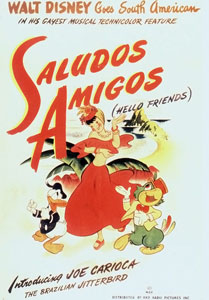Disney’s "The Sword in the Stone" stands as a beloved animated classic that has captivated audiences for decades. Released in 1963, this film adapts elements of Arthurian legend into a charming and humorous coming-of-age story. With its whimsical animation, memorable characters, and timeless themes, the movie continues to hold a special place in the hearts of viewers young and old. This article explores the various facets of "The Sword in the Stone," from its origins and artistic style to its cultural impact and behind-the-scenes stories. Through this comprehensive overview, we gain a deeper appreciation for this enchanting piece of Disney history.
Overview of Disney’s Classic Animated Film "The Sword in the Stone"
"The Sword in the Stone" is a 1963 animated feature produced by Walt Disney and Walt Disney Productions. It is the 18th animated feature in the Disney canon and is notable for its lighthearted tone, humor, and innovative animation techniques. The film follows the journey of a young, mischievous orphan named Arthur, known as Wart, who unexpectedly becomes the heir to the throne of England. Guided by the wise and eccentric wizard Merlin, Wart embarks on a series of adventures that teach him about bravery, kindness, and the true meaning of leadership. The film combines fantasy, comedy, and moral lessons, making it a quintessential Disney animated classic.
Visually, "The Sword in the Stone" features vibrant color palettes and lively character designs that bring the medieval setting to life. Its storytelling is punctuated with humorous dialogues and memorable musical moments, such as the song "Higitus Figitus." The film’s tone balances comedy with heartfelt moments, making it accessible to children while also engaging adult viewers. Over the years, it has become renowned for its inventive animation sequences, including the famous transforming magic lessons and the whimsical depiction of animals. Despite being one of Disney’s earlier films to incorporate more experimental animation techniques, it remains a standout for its artistic creativity. The film’s enduring popularity is reflected in its continued broadcasts and home media releases, maintaining its status as a family favorite.
The Origins and Inspiration Behind "The Sword in the Stone"
The origins of "The Sword in the Stone" trace back to the 1938 novel "The Sword in the Stone" by T.H. White, which is part of his larger work "The Once and Future King." White’s novel reimagines the legend of King Arthur through the perspective of Wart, a young boy who becomes the legendary king. Disney’s adaptation draws heavily from White’s interpretation, emphasizing humor, character development, and moral lessons. The film’s production was part of Disney’s effort to create animated features that appeal broadly while exploring timeless myths and legends.
The adaptation process involved condensing White’s complex narrative into a more accessible and visually engaging format suitable for a family audience. Disney’s screenwriters and directors focused on highlighting the humorous and magical aspects of the story, often adding comedic characters and memorable scenes. The film also reflects the 1960s cultural context, emphasizing themes of learning, growth, and the importance of wisdom over brute strength. The inspiration behind the film was to create a lighthearted yet meaningful story that celebrates curiosity, education, and the potential of youth.
The legend of King Arthur itself has roots in Celtic mythology and medieval romance literature, with various versions across centuries. Disney’s version simplifies and stylizes these tales, emphasizing the moral and educational themes rather than historical accuracy. The film’s portrayal of Merlin as a quirky, wise, and slightly eccentric wizard was inspired by popular depictions of magicians and wizards in folklore. Overall, the film was born out of a desire to adapt a beloved legend into a lively, visually appealing animated story that would resonate with audiences of all ages.
Key Characters and Voice Cast in the Film
At the heart of "The Sword in the Stone" are its memorable characters, each brought to life through distinctive voice performances. The young protagonist, Wart, is voiced by Rickie Lee Jones in the original release, and later by other actors in different versions. Merlin, the wise and eccentric wizard, is voiced by Karl Swenson, whose warm and humorous tone captures the character’s blend of wisdom and whimsy. The film’s antagonist, Madam Mim, a mischievous and wicked witch, is voiced by Martha Wentworth, providing comic villainy that contrasts with Merlin’s eccentricity.
Other notable characters include Sir Ector, Wart’s foster father, voiced by Sebastian Cabot, who offers a paternal figure and comic relief. Archimedes, Merlin’s wisecracking owl companion, is voiced by Junius Matthews and adds a layer of humor and intelligence to the story. The young King Arthur, or Wart, is depicted as curious, kind-hearted, and eager to learn, embodying the film’s themes of growth and self-discovery. The voice cast’s performances contribute significantly to the film’s charm, blending humor with sincerity to create characters that have endured over generations.
The film also features a variety of animal characters, such as the squirrel and Robin Hood-like robins, who serve as comic sidekicks and moral guides. The voice performances are complemented by expressive animation that captures their personalities vividly. Overall, the cast’s portrayals help elevate the film’s storytelling, making the characters relatable and memorable, and enhancing the film’s timeless appeal.
Plot Summary: The Journey of Young Arthur and Merlin
The story begins in medieval England, where a young orphan boy named Wart lives with his foster father Sir Ector. Wart is a curious and mischievous boy who spends his days dreaming of adventure and nobility. His life takes a turn when Merlin, a wise and eccentric wizard, arrives and decides to take Wart under his wing. Merlin believes that Wart has the potential to become a great king and begins teaching him life lessons through a series of magical and humorous experiences.
One of the most iconic scenes involves Merlin transforming Wart into various animals—an owl, a fish, and a squirrel—each experience designed to teach him about different aspects of life and leadership. Meanwhile, the evil witch Madam Mim challenges Merlin to a magical duel, showcasing Merlin’s wit and power, and adding humor and excitement to the story. As Wart grows and learns, he faces the ultimate test when he pulls the legendary sword from the stone, proving himself worthy of becoming King Arthur. His journey from a mischievous boy to a wise and compassionate leader is marked by humor, magic, and lessons about humility and kindness.
Throughout the film, Merlin’s mentorship and Wart’s curiosity highlight the importance of education, self-awareness, and moral integrity. The story culminates in Wart’s acceptance of his destiny, with Merlin’s guidance and the support of his friends. The film’s narrative emphasizes that true leadership comes from wisdom, compassion, and a willingness to learn. The blend of adventure, comedy, and moral lessons makes "The Sword in the Stone" a compelling coming-of-age story rooted in legendary lore.
Visual Style and Animation Techniques Used in the Film
"The Sword in the Stone" showcases Disney’s inventive approach to animation during the early 1960s, featuring vibrant colors, expressive character designs, and dynamic sequences. The film employs traditional hand-drawn animation techniques, with meticulous attention to detail in character expressions and backgrounds. One of its most notable features is the use of "squash and stretch" animation, which gives characters a lively and exaggerated motion that enhances comedic timing.
Innovative visual effects are employed throughout the film, especially during the magical transformations and Merlin’s spellcasting scenes. For example, the animated sequences where Merlin’s magic causes objects and characters to morph are characterized by swirling, colorful patterns and fluid motion, showcasing Disney’s mastery of visual storytelling. The film also uses stylized backgrounds that evoke the medieval setting, often with lush landscapes and detailed castle interiors, creating an immersive environment.
The animation team experimented with multi-plane camera techniques to add depth and dynamism to scenes, especially in the magical and action sequences. The whimsical depiction of animals, with exaggerated features and expressive faces, contributes to the humor and charm of the film. Additionally, the use of vibrant color palettes and inventive visual motifs helps distinguish different characters and settings, making each scene visually engaging. This combination of traditional animation and creative effects results in a lively, colorful, and imaginative visual style that remains appealing to audiences.
Themes and Messages Conveyed Through the Story
At its core, "The Sword in the Stone" explores themes of growth, education, and the true qualities of leadership. The story emphasizes that wisdom, kindness, and humility are more important than physical strength or superficial appearances. Merlin’s lessons to Wart highlight the importance of curiosity, learning, and self-awareness as foundations for personal development. The film advocates for embracing one’s unique qualities and understanding that everyone has the potential for greatness.
Another prominent theme is the idea that true leadership involves empathy and moral integrity. Wart’s journey from a mischievous boy to a wise king underscores that leadership is rooted in compassion and responsibility. The film also explores the importance of friendship, as Wart’s relationships with Merlin, Archimedes, and other characters influence his growth. Humor and magic serve as tools to teach moral lessons in an engaging way, making the film both entertaining and educational.
The narrative also touches on the value of curiosity and the pursuit of knowledge, encouraging audiences to embrace learning and self-improvement. The humorous portrayal of Madam Mim’s mischievousness serves as a caution against arrogance and maliciousness. Ultimately, "The Sword in the Stone" conveys that true nobility comes from within, and that everyone has the capacity to become their best selves through wisdom, kindness, and perseverance.
Reception and Critical Response to "The Sword in the Stone"
Upon its release, "The Sword in the Stone" received mixed reviews from critics but was generally appreciated for its humor, animation, and charming storytelling. Some critics found the film’s pacing to be uneven, with certain sequences feeling overly drawn-out or simplistic. Nevertheless, many praised the film’s inventive


